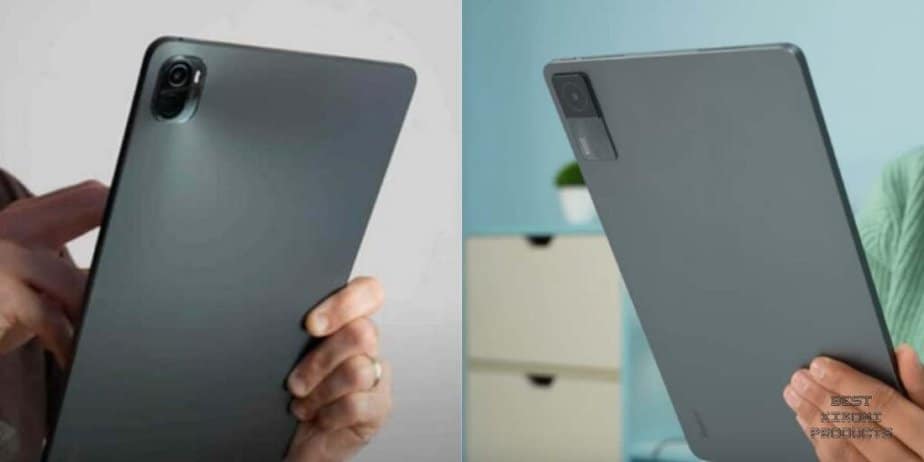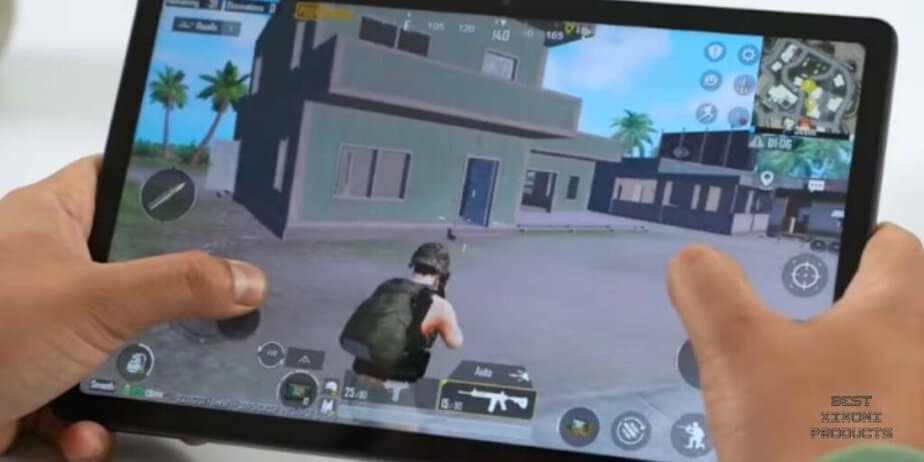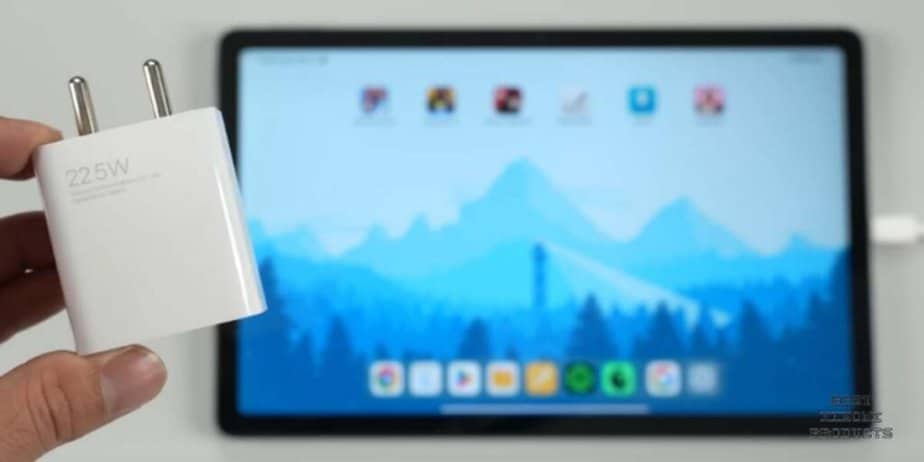Tablets have been getting increasingly popular, especially in the Android space. The increase in popularity is because of the increase in quality too. Better designs, better features, and better performance are the reasons why the Android tablet industry is booming now.
As someone who loves to stay up to date with the latest tech releases, getting my hands on the Xiaomi Pad 5 and the Xiaomi Redmi Pad was like a dream come true. But enough about me, let's talk about these two amazing devices!
In this review, I'll be taking a look at the Xiaomi Pad 5 vs Xiaomi Redmi Pad, and sharing my thoughts on which one reigns supreme. So buckle up, and let's dive in!
Xiaomi Pad 5 vs Xiaomi Redmi Pad
Highlights of the Xiaomi Mi Pad 5
Gorgeous 2.5K Display - A beautiful, bright LCD display with Dolby Vision support is great for movies and games.
Powerful Performance - Snapdragon 860 is capable and faster than most smartphones/tablets in the category, only iPad 9th Gen beats it.
Large Battery - 8720 mAh cell lasts for multiple days on light use. 33W fast charging is a good addition as well.
Quad Speaker - Excellent quad-speaker technology is loud and clear, and consuming content on the Xiaomi Pad 5 is amazing.
Stylus Support - The Xiaomi Pad 5 has stylus support, which is useful for artists on a budget. The stylus is sold separately.
The Xiaomi Pad 5 is almost perfect on paper. You have everything you need in a tablet. Xiaomi has even implemented some tablet-specific features in the software. Overall, for the price, the Xiaomi Pad 5 is simply amazing.
Highlights of the Xiaomi Redmi Pad
Brilliant Build - Premium metal design with rectangular camera island. Measures 250.38 x 157.98 x 7.05 mm, weighs 445 g and available in 3 colors.
Gorgeous Display - 10.61-inch LCD screen with 2,000 x 1,200 resolution, 90Hz refresh rate, 220 ppi pixel density, quad speakers and Dolby Atmos support.
Impeccable Performance - MediaTek Helio G99 processor, Mali-G57 MC2 GPU, up to 6GB LPDDR4X RAM, and 128GB UFS 2.2 expandable storage. Good for daily tasks and casual gaming.
Large Battery - 8,000mAh battery provides a full day's worth of work and entertainment. Supports 18W fast charging.
Xiaomi Pad 5 vs Xiaomi Redmi Pad: Design

As someone who has used both the Xiaomi Pad 5 and Redmi Pad, I can say that both tablets have impressive designs. The Redmi Pad has a metal unibody design that feels and looks premium, with a rectangular camera island at the back. On the other hand, the Xiaomi Pad 5 has a sleeker look with a glass front, aluminum frame, and plastic back.
In terms of size and weight, the Xiaomi Pad 5 is slightly larger and heavier than the Redmi Pad. The Redmi Pad measures 250.5 x 158.1 x 7.1 mm and weighs 465g, while the Xiaomi Pad 5 measures 254.7 x 166.3 x 6.9 mm and weighs 511g.
Both tablets have stylus support, but the Redmi Pad's stylus is not included in the package and must be purchased separately. The Redmi Pad also has a wider range of colors to choose from, including Graphite Gray, Moonlight Silver, and Mint Green, while the Xiaomi Pad 5 is available in Cosmic Gray, Pearl White, and Green.

Overall, both tablets have impressive designs and it ultimately comes down to personal preference. If you're looking for a tablet with a metal unibody design and more color options, the Redmi Pad may be the better choice. However, if you prefer a sleeker and more modern look, the Xiaomi Pad 5 is definitely worth considering.
Xiaomi Pad 5 vs Xiaomi Redmi Pad: Which has a Better Display?
Starting with the Xiaomi Redmi Pad, I found that its 10.61-inch IPS LCD screen is quite impressive. The 90Hz refresh rate and 400 nits of brightness make for a smooth and vibrant display that is enjoyable to use for browsing, streaming, and gaming.

The 5:3 aspect ratio and 1200 x 2000 pixel resolution also make for a decent viewing experience, although the 220 pixels per inch (ppi) density is slightly lower than what you might find on other high-end tablets.
Moving on to the Xiaomi Pad 5, I was immediately impressed by the larger 11.0-inch IPS LCD screen. The 120Hz refresh rate is a noticeable improvement over the Redmi Pad, offering an even smoother and more responsive UE.
The inclusion of HDR10 and Dolby Vision also adds to the overall visual quality of the display, with deeper blacks and brighter whites that make for a more immersive viewing experience. The 16:10 aspect ratio and 1600 x 2560 pixel resolution result in a higher 274 ppi density, making text and images appear sharper and more defined.

Overall, I found that the Xiaomi Pad 5 offers a superior display compared to the Xiaomi Redmi Pad. While both tablets offer impressive IPS LCD screens with 1B colors, the Pad 5's larger size, higher refresh rate, and HDR10/Dolby Vision support make for a more enjoyable and immersive viewing experience.
It's worth noting that the Redmi Pad still offers a decent display at a lower price point, making it a viable option for those on a budget who don't necessarily need the latest and greatest display technology.
Which Offers Better Performance: Xiaomi Pad 5 or Xiaomi Redmi Pad?
The Xiaomi Redmi pad comes with Android 12 and MIUI 13.1, which is a pretty decent combination. It's powered by the Mediatek MT8781 Helio G99 chipset, which has an Octa-core processor consisting of 2x2.2 GHz Cortex-A76 and 6x2.0 GHz Cortex-A55.

The GPU is a Mali-G57 MC2, and it comes with either 3GB or 6GB of RAM, depending on the variant. It also has a microSDXC card slot and up to 128GB of internal storage.
In terms of performance, the Xiaomi Redmi Pad is pretty smooth and is decent enough for its price range. It scored an impressive 1852 on the GeekBench test and on the GFXBench test, it managed 13fps (ES 3.1 onscreen), which is decent enough for this day and age to handle most demanding apps and tasks.
The Xiaomi Pad 5 on the other hand is powered by the Qualcomm Snapdragon 860 chipset, which is built on a 7nm process. It has an Octa-core processor, consisting of 1x2.96 GHz Kryo 485 Gold, 3x2.42 GHz Kryo 485 Gold, and 4x1.78 GHz Kryo 485 Silver.

The GPU is an Adreno 640, and it comes with either 6GB or 8GB of RAM and up to 256GB of internal storage. It also runs on Android 11, upgradable to Android 13, and MIUI 14.
In terms of performance, the Xiaomi Pad 5 absolutely blew me away. It scored a whopping 473819 on the AnTuTu benchmark test (v8) and an even more impressive 555079 on the AnTuTu benchmark test (v9).
It's more powerful, has more RAM and storage, and performs significantly better on benchmark tests. If you're looking for a tablet that can handle heavy-duty tasks and provide a smooth user experience, the Xiaomi Pad 5 is definitely the way to go.
Is the Battery Better on the Xiaomi Redmi Pad or the Xiaomi Pad 5?
In terms of battery, the Xiaomi Redmi Pad boasts an impressive Li-Po 8000 mAh battery that is non-removable. The 18W wired charging capability is not too shabby either. However, I have to admit that I was slightly disappointed that there wasn't any wireless charging. But overall, the battery is solid and should be able to last a decent amount of time.

The Xiaomi Pad 5 on the other hand packs a more powerful Li-Po 8720 mAh battery that is also non-removable. But the real standout feature here is the 33W wired charging capability with PD3.0.
That's quite a jump in terms of charging speed, which is great for those of us who are always on the go and need to juice up our devices quickly. Unfortunately, like the Redmi Pad, there's no mention of wireless charging.
I have to say that the Pad 5 comes out on top. Its faster charging capabilities are a significant plus, and the slightly larger battery should offer a longer battery life compared to the Redmi Pad.

Of course, it's worth mentioning that there are other factors to consider, such as display size, processing power, and so on, but in terms of battery performance, the Xiaomi Pad 5 seems like the way to go.
| Specification | Xiaomi Redmi Pad | Xiaomi Pad 5 |
|---|---|---|
| Display Type | IPS LCD, 1B colors, 90Hz | IPS LCD, 1B colors, 120Hz, HDR10, Dolby Vision |
| Size | 10.61 inches, 320.4 cm2 | 11.0 inches, 350.9 cm2 |
| Resolution | 1200 x 2000 pixels, 5:3 ratio | 1600 x 2560 pixels, 16:10 ratio |
| Chipset | Mediatek MT8781 Helio G99 | Qualcomm Snapdragon 860 |
| CPU | Octa-core (2x2.2 GHz Cortex-A76 & 6x2.0 GHz Cortex-A55) | Octa-core (1x2.96 GHz Kryo 485 Gold & 3x2.42 GHz Kryo 485 Gold & 4x1.78 GHz Kryo 485 Silver) |
| GPU | Mali-G57 MC2 | Adreno 640 |
| Card slot | microSDXC | No |
| Internal | 64GB 3GB RAM, 128GB 4GB RAM, 128GB 6GB RAM, UFS 2.2 | 128GB 6GB RAM, 256GB 6GB RAM, UFS 3.1 |
| Main Camera | Single 8 MP, f/2.0, (wide), AF | Single 13 MP, f/2.0, Dual-LED flash, HDR, panorama |
| Video | 1080p@30fps | 4K@30fps, 1080p@30fps |
| Selfie Camera | Single 8 MP, f/2.3, 105° (ultrawide) | Single 8 MP, f/2.0 |
| Battery Type | Li-Po 8000 mAh, non-removable | Li-Po 8720 mAh, non-removable |
| Charging | 18W wired | 33W wired, PD3.0 |
Xiaomi Pad 5 vs Xiaomi Redmi Pad: Which is Better?
Well this entirely depends on what you want to use the tablet for. The Xiaomi Pad 5 is a more premium tablet with a larger display and higher resolution. The Pad 5 also has a more powerful processor, better cameras, and a bigger battery than the Redmi Pad. However, I felt that the Redmi Pad is more affordable and since it comes with a built-in stylus, it's a great option for students and casual users.
Also Check:


